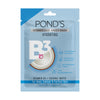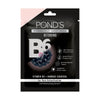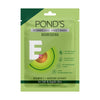Everybody wants to have a flawless, radiant face. However, it's not the reality for many. People suffer from acne, acne scars, hyperpigmentation, dark spots, wrinkles and more. So, if you are struggling with any such condition, don't worry, you are not alone. Dark patches on the skin, also known as hyperpigmentation is a condition which is pretty common. However, it can still be a source of concern and self-consciousness for many individuals. These patches are nothing but areas of the skin that appear darker in comparison to the surrounding areas.
Areas of increased pigmentation on the skin can appear as isolated dark spots or larger patches, and they often differ in their causes, symptoms, and treatment options. Understanding the underlying factors contributing to your dark patches and exploring effective treatment strategies is essential in managing and improving the appearance of the skin. In this comprehensive guide, we will delve into the causes, symptoms, and various treatment options available for dark patches, empowering you with the knowledge to address this common dermatological concern.
What Causes Dark Patches on Skin?
Dark patches on the skin can be caused by several factors, both internal and external. Here are some major factors that can cause the development of dark patches on your skin:
Sun Exposure: Prolonged exposure to the sun is harmful ultraviolet (UV) rays can trigger an increase in melanin production in your skin, especially in certain parts that are exposed. This can lead to dark patches on the skin.
Hormonal Changes: Hormonal imbalances, such as those occurring during pregnancy, menopause, or while taking hormonal medications, can also contribute to the development of dark patches.
Post-Inflammatory Hyperpigmentation: After an injury, inflammation, or skin condition, such as acne or eczema, the skin may produce excess melanin as part of the healing process. This can also result in dark patches on the skin.
Skin Conditions: Certain skin conditions, such as melasma and lentigines (age spots), are characterised by the formation of dark spots or dark patches on the skin.
Symptoms of Dark Patches
The basic symptom of having dark spots or dark patches is just that some portion of your affected skin will be darker in colour. However, it may be present in various forms on the skin. Enlisted below are how dark patches may appear on your skin:
Increased Pigmentation: The affected areas of the skin may appear darker in colour than the skin surrounding it.
Irregular Shape and Size: Depending on the affected area of the skin, dark patches can vary in shape and size, ranging from small dots to larger isolated patches.
Symmetry: While this is not very common, in some cases, the dark patches may also appear to be symmetrical, affecting both sides of the body in equal proportions.
Variation in Colour: These patches may have different shades of brown, black, or gray depending on your skin tone and your skin condition.
How to Remove Dark Spots on the Face?
While it might not be possible to completely remove dark spots on face, there are various treatment options available to reduce their appearance to a great extent. Here are some steps and treatment options to consider:
Sun Protection: Protecting your skin from the sun is crucial to prevent the dark patches from worsening. Use a broad-spectrum sunscreen with a high SPF, such as POND'S Serum Boost Sunscreen, wear protective clothing, and limit sun exposure during peak hours. You can also use POND'S DeTan Facewash to reduce the effects of sun exposure on your face.
Topical Products: Over-the-counter products containing ingredients like hydroquinone, retinoids, kojic acid, or vitamin C may help lighten dark patches. You can use POND'S Bright Beauty Anti-Pigmentation Serum with 12% Gluta-Niacinamide Complex to reduce pigmentation. You can also use POND'S Youthful Glow Age Miracle with Retinol or POND'S Vitamin C Serum to help reduce dark spots and dark patches.
Chemical Peels: Dermatologists may recommend chemical peels to remove the top layer of the skin, promoting the growth of new, evenly pigmented skin cells.
Microdermabrasion: This procedure involves exfoliating the skin using a special device to reduce the appearance of dark patches.
Laser Therapy: Certain laser treatments can target the excess melanin in the skin, helping to lighten the dark patches.
While the first two methods can be adopted by anyone, for the last three treatments, please visit a certified dermatologist and get your skin checked before starting anything.
Home Remedies to Get Rid of Dark Patches
While home remedies may not provide drastic results, they can be used as complementary treatments. Here are some dark patches or dark spots remedies that you can try at home:
Lemon Juice: Applying freshly squeezed lemon juice to the affected areas can help lighten the skin due to its natural bleaching properties. However, be cautious as lemon juice can cause skin irritation in some individuals. Mix it with soothing ingredients like honey and dilute it before applying on face.
Aloe Vera Gel: Aloe vera has soothing and moisturising properties that can help improve the appearance of dark patches while also keeping your skin soft and supple.
Turmeric: The use of turmeric paste on the skin may help reduce hyperpigmentation due to its antioxidant properties. However, it can slightly sting your skin, so only use turmeric that's meant for facial use and not the one used in cooking. Also, mix it with soothing ingredients like aloe vera gel or milk to reduce irritation.
How to Prevent Dark Patches on Skin?
To prevent the occurrence or worsening of dark patches on the skin, consider the following measures
Sun Protection: Always apply sunscreen before going outdoors, wear protective clothing, and seek shade during peak sun hours.
Gentle Skin Care: Avoid harsh skincare products and practices that may irritate the skin. Opt for mild cleansers and moisturisers suitable for your skin type such as POND'S Bright Beauty Foaming Face Wash.
Hormonal Balance: If you experience hormonal imbalances, consult with a healthcare professional to manage and treat any underlying conditions that may worsen your skin.
When to See a Doctor?
While many cases of dark patches on the skin can be managed with over-the-counter treatments and home remedies, it is advisable to consult a dermatologist in the following situations:
Severe or Persistent Hyperpigmentation: If the dark patches are extensive, persistent, or are accompanied by other concerning symptoms, a dermatologist can provide appropriate evaluation and treatment.
Rapidly Changing Patches: If the patches change in size, shape, colour, or texture, it's essential to seek medical attention promptly.
Discomfort or Itching: If the dark patches cause discomfort, pain, or severe itching, a dermatologist can help diagnose and manage the underlying cause.
Dark patches on the skin can be a cause for concern for many individuals. Understanding the causes, symptoms, and treatment options is essential in managing and minimising their appearance. By taking preventive measures, following a suitable treatment plan, and seeking professional advice when needed, individuals can achieve healthier and more even-toned skin. Remember, everyone's skin is unique, so finding the right approach may require some trial and error, but with persistence, positive results can be achieved.












